 |
A culinary journey
Brussels is beautiful, like Belgian lace, as it shines its romantic light onto the stars of its nights. From round cobblestones to concrete slabs, Brussels is alive and waiting to be experienced. To get a feel for this multi-faceted city and to feel like a real Brusseleer, go into a tavern. This is the realm of real Belgian beer and the meeting place of people from all walks of life who gather to talk about everything and nothing. And when it's time for a snack, there's an open-faced sandwich of fromage blanc waiting for you.
And then there is gastronomic Brussels, that revels in its culinary glory and boasts of its chic and distinguished establishments. For "caricoles," whelks or winkles, go to the noon fair or the old market. For a cozy get-together? Head for one of the tea salons. Hot Brussels waffles under a veil of icing sugar move like hotcakes... and the divine pralines and enticing chocolates, a delight for the senses, are eaten with almost religious devotion in the four corners of the Grand Place.
Chantal VAN GELDEREN
Brussels is one of the capitals of gastronomy. While our cooking has shown a French inspiration for centuries, it is now also revealing a distinctively homegrown individuality. The locals are known for their demanding standards when it comes to food. Both chefs and housewives have to go out shopping: where do they go to buy their bread, meat, fruit and vegetables? Where do they obtain their famous Brussels coffee? What is the source of these delicious pastries, cakes and waffles?
This journey through Brussels will answer these questions, from outdoor markets to boutiques filled with tempting displays. Curious to discover the origin of our culinary traditions? A visit to the Musée d'Art Ancien is a must: the works of Frans Snyders, Joachim Beuckelaer, Pieter Aertsen and Jordaens will amaze you with their still lifes of animals and laden tables.
|
|
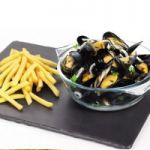
While Belgium is the homeland of the French fry, the combination of "moules-frites" is certainly the most traditional of Brussels' dishes, which purists pair with a good glass of beer. While true lovers of mussels and fries prefer their mollusks prepared "marinière" style, they appear in countless other forms: in white wine, with cream, gratinéed, or served cold.
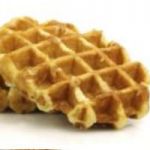
Mention Brussels and waffles come to mind... they have been world-famous since the 1958 Exposition! A real treat, both crisp and light. Waffles are eaten hot accompanied with butter, sugar, cream or fruit.
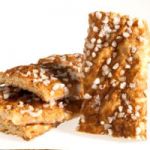
The Fossé-aux-Loups, called the gulf of Gracht or Grecht in old Flemish, in the 15th century extended from the east of the Senne to the ramparts of Brussels. On this spot, a community of third-order friars settled. One day, a brother baker of French origin was welcomed into the community and set about making baguettes (commonly called "French bread" in Belgium) to vary the menu. Perhaps by accident, the baguettes were rolled in coarse sugar. This new and delicious treat was called "bruut van de grecht" (bread from the gulf).
When French troops occupied Brussels, they translated the name as "pain à la grecque," or "Greek bread," a name that stuck after the occupation ended and that was even adopted by Flemish-speakers who translated it in turn as "Griekse brood" ! This name is also explained by the use of a "grecque," a kind of bread knife used to slice the very crumbly sweet bread at certain times of the year.

Belgium, as everyone knows, is the land of beer. The region of Brussels in particular offers a variety of artisanal beer, each with a slightly tart and refreshing flavor. The best known are Gueuze, Lambic, Faro and Kriek. You might sample them with a slice of bread spread with fresh white cheese (fromage blanc), a famed specialty typical of Brabant. All the secrets of Brussels' brewers are revealed at the Musée de la Gueuze, located in an old artisanal brewery dating from the 19th century. This fascinating tour ends in the tasting room. Another brewing museum awaits you in the Grand-Place, located this time in the illustrious Brewers guild house.
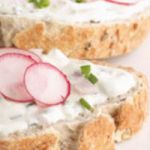
Three cheeses in particular are the delight of the residents of Brussels who frequent the fine old brasseries of the capital that serve the traditional snack known as a "tartine au fromage blanc," or a slice of bread spread with white cheese. They are: ettekeis, a pungent round; plattekeis, fresh white cheese; and pottekeis, a blend of the two. It is usually the latter that is slathered onto a slice of gray bread and topped with onions and horseradish, a treat usually enjoyed with a glass of good Brussels beer, whether gueuze, lambic, faro or kriek.
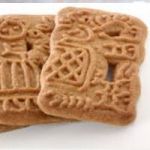
Flavored with cinnamon, nutmeg, cloves and brown sugar, these cookies, a close relative of gingerbread, make a nice accompaniment to a cup of coffee. One of the oldest jewels of Belgian gastronomy, they delight parents as well as children, to whom they're given as a reward around the feast of St. Nicholas.
A journey of discovery through old, unusual, folkloric, grand and popular cafés reveals the history of the city and the evolution of tastes and social habits, while the decor bears witness to all the major trends in architecture and style.
It's a strange neighborhood that Het Scarlaken invites you to discover. There, first on the banks of the Senne and then in Ste. Catherine, the restaurants still serve seafood though the old port is long gone from where it marked 900 years of history. But why did the citizens bury their river and inner port? Buildings from the 17th, 18th and 19th centuries represented all the ages of the port and the fruit and vegetable market of the 1920s. They replaced the old basins, the true "belly of Brussels," where today all the Mediterranean and its 1000 flavors are displayed.

The 500-year-old tradition of whelks goes back to the 16th century, a time when work began at the port of Brussels, which also saw the development of the seafood business, with products sold by vendors on foot. A handcart, an enameled pot, some celery and water... the necessary ingredients to transform these little whelks into culinary delights. The whelk guild continues to oversee the authentic tradition.
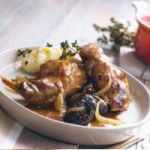
Don't leave Brussels without having sampled rabbit with beer. Squeeze close to the handcart vendors to try dried plaice, a few whelks, or mussels of every style served with hot golden French fries. Explore the little streets that run from the Grand-Place to form the revered region with names like Pepper Street, Butter Street, Butchers Street, Meat Street and Bread Street, a reminder that in the 12th century Grand-Place was one of the great markets of Europe.

-

 Recipes
Recipes
-

 Products
Products
-

 Entertaining
Entertaining
-

 Chefs
Chefs
-

 Hints & Tips
Hints & Tips
-

 Glossaries
Glossaries








